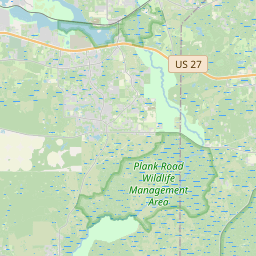Leon County's American Revolutionary War Soldiers
Historical marker location:






1765: The Stamp Act is passed by the British Parliament, imposing a tax on American colonists for various printed materials. This sparks widespread protests and resistance among the colonists.
1770: The Boston Massacre occurs when British soldiers fire on a crowd of American colonists in Boston, resulting in the death of five colonists. The event further escalates tensions between the colonists and British authorities.
1773: The Boston Tea Party takes place as colonists, disguised as Native Americans, dump tea from British East India Company ships into Boston Harbor in protest against the Tea Act.
1774: The First Continental Congress convenes in Philadelphia. Delegates from twelve of the thirteen colonies gather to discuss grievances against British policies and plan a united response.
1775: The Battles of Lexington and Concord mark the beginning of armed conflict between British troops and American colonial militia. The "shot heard 'round the world" ignites the Revolutionary War.
1776: On July 4, the Second Continental Congress adopts the Declaration of Independence, drafted primarily by Thomas Jefferson. The document asserts the colonies' independence from Britain and outlines the principles of individual rights and self-government.
1777: The American victory at the Battle of Saratoga in New York proves to be a turning point in the war. It convinces the French to openly support the American cause and enter the war as allies.
1778: The Treaty of Alliance is signed between the United States and France, formalizing their military alliance. France provides crucial support to the American forces, including troops, naval assistance, and financial aid.
1781: The Siege of Yorktown takes place in Virginia, where combined American and French forces, led by General George Washington and French General Rochambeau, successfully trap British General Cornwallis and his troops. Cornwallis surrenders on October 19, effectively ending major hostilities in the Revolutionary War.
1783: The Treaty of Paris is signed, formally ending the American Revolutionary War. Great Britain recognizes the independence of the United States and establishes its boundaries. The treaty also grants fishing rights to American fishermen in the waters off Newfoundland and Nova Scotia.
1787: The Constitutional Convention convenes in Philadelphia to draft a new constitution to replace the Articles of Confederation, which proved ineffective in governing the newly independent nation.
1788: The United States Constitution is ratified by the required number of states and goes into effect. It establishes a strong federal government with separate branches and a system of checks and balances.
1789: George Washington is inaugurated as the first President of the United States, and the new federal government is established in New York City.
This timeline provides a general overview of the major events during the American Revolution, but it is important to note that there were numerous other battles, diplomatic negotiations, and developments that occurred during this period.
Florida is home to the largest collection of natural springs in the world, with over 600 freshwater springs located throughout the state.
In the early 19th century, the United States acquired Florida from Spain, and Leon County was established in 1824 as one of the original 14 counties of the new territory. The county was named after Juan Ponce de León, the Spanish explorer who was the first European to arrive in Florida. Tallahassee, the current capital of Florida, was designated as the county seat.
Leon County played a significant role in the Civil War. The Battle of Natural Bridge, in 1865, saw Confederate forces successfully defend the capital from Union troops, making it one of the few Confederate victories in Florida. After the Civil War, the area underwent a period of reconstruction and the economy shifted towards agriculture, particularly cotton and tobacco.
In the 20th century, Leon County experienced significant growth, with the establishment of Florida State University (FSU) in 1851 and Florida A&M University (FAMU) in 1887. These universities brought an influx of students and contributed to the cultural and intellectual development of the area. Today, Leon County is known for its vibrant arts scene, diverse community, and natural beauty, with many parks, forests, and outdoor recreation areas.
Leon County Timeline
This timeline provides a concise overview of the key events in the history of Leon County, Florida.
- 1824 - Leon County is established as one of the original counties in Florida.
- 1825 - Tallahassee is established as the county seat.
- 1837 - The first courthouse in Tallahassee is constructed.
- 1856 - The first railroad, the Pensacola and Georgia Railroad, is completed in Leon County.
- 1861-1865 - Leon County actively participates in the American Civil War.
- 1886 - The first electric streetcar system is introduced in Tallahassee.
- 1947 - Florida State University is established in Tallahassee.
- 1958 - Leon County is desegregated as a result of the Civil Rights Movement.
- 1977 - Tallahassee Regional Airport opens.
- 1997 - The Tallahassee-Leon County Civic Center (now known as the Donald L. Tucker Civic Center) is completed.